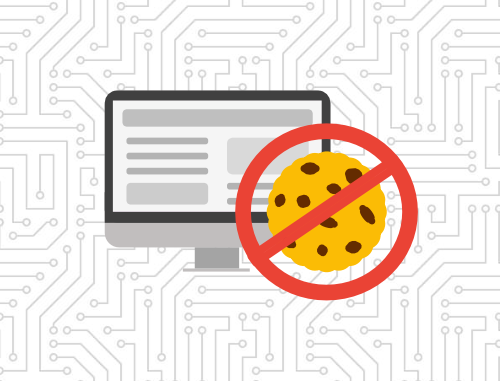
The phaseout of the third-party cookie will be one of the biggest changes to the marketing industry—and if you don’t have a plan, you’re already behind.
The good news is that Google recently announced support for the third-party cookie would be extended until late 2023, giving marketers more than a year extension from the previous plan to block third-party cookies by 2022. The Privacy Sandbox initiatives will be delayed while more testing takes place.
The inevitable truth is that the third-party cookie will be no more, drastically changing the marketing landscape as we know it. Preparing for this change will be incredibly important moving forward, so start making those preparations as soon as possible.
Here are some things you can do right now to help prepare your marketing efforts for when these changes take place.
Leverage Your First-Party Data
With the absence of the third-party cookie, first-party data will take on even more value. This is not a new concept to anyone in digital marketing, however, the ways in which it’s collected, deployed, and organized remains an area in need of focus and attention.
Applying analytics to your first-party data can reveal relevant insight into your customer base and help with understanding your customer journey and profiles. Growing your first-party audience through contests, loyalty programs, and frictionless collection methods on site are all great ways to significantly increase your member base. Reaching out to your subscribed email contacts for more identifiers or feedback can help produce more insight and understanding on how to better serve your current and future customers.
At the end of the day, the goal is to build, organize, and optimize your first-party data in ways in which you can leverage it to improve performance.
Google Analytics 4 Tracking
The recent release of the Google Analytics 4 property (GA4) is looking like the tracking solution of the cookieless future. It is privacy-centric, and designed to work with or without cookies. The new Google Analytics is moving from session-based tracking to event-based tracking—this means that anything someone does on a website is registered as an event instead of a session. Clicking on a link, navigating to a page or product, checking out, phone calls, and form submissions will all be counted as an event. Focusing more on behavior and intent-based targeting, paired with machine learning and statistical modeling, GA4 will be able to fill in data gaps, giving businesses better data to meet their customers’ needs as the world becomes less dependent on cookies.
Contextual Targeting
Contextual targeting is expected to be one of the biggest winners since it does not rely on third-party cookies. With contextual targeting, ads are displayed on the content your consumer is looking at instead of an overall behavior profile. Essentially, consumers will only see ads that are relevant to the content they are currently consuming. From the consumer perspective, contextual ads are less obtrusive, more relevant, and less creepy since they don’t follow consumers around the web as cookie-based behavioral retargeting does.
Understanding what contextual channels and targeting strategies work for you now will ultimately be a safe bet when we move away from the cookie in the future.
Conclusion
The truth is, settling for just one channel will be the death of your business. It’s more important than ever to diversify your marketing to understand what channels, strategies, and content will work best for your business. We have already seen Facebook ad performance take a hit with the new IOS14 update, and the same thing will happen to Google once the inevitable truth of the cookieless future becomes a reality. So don’t put all your eggs in one basket. Find those quick wins that scale, and you will be in a better position for the future.

Leave a Reply